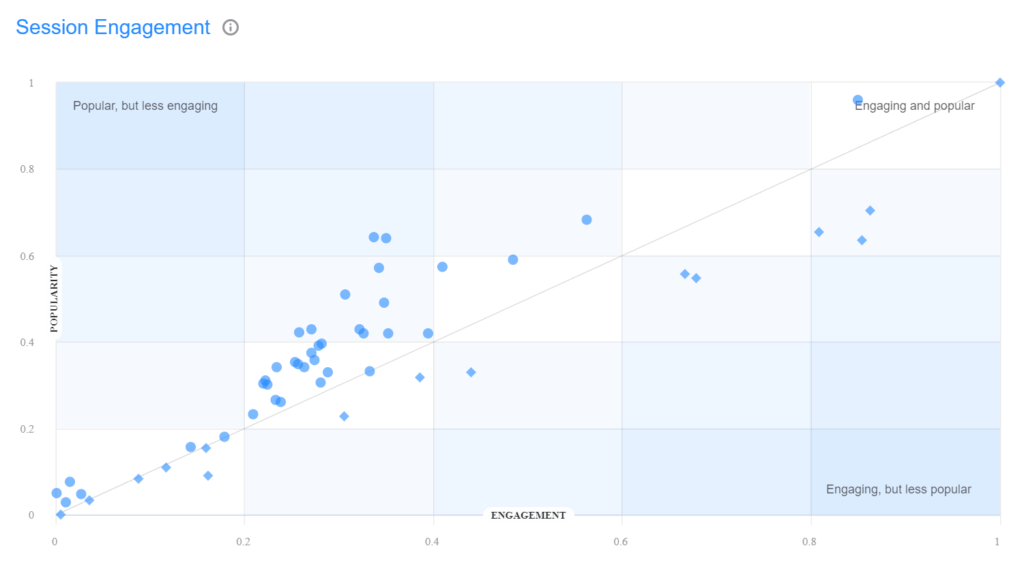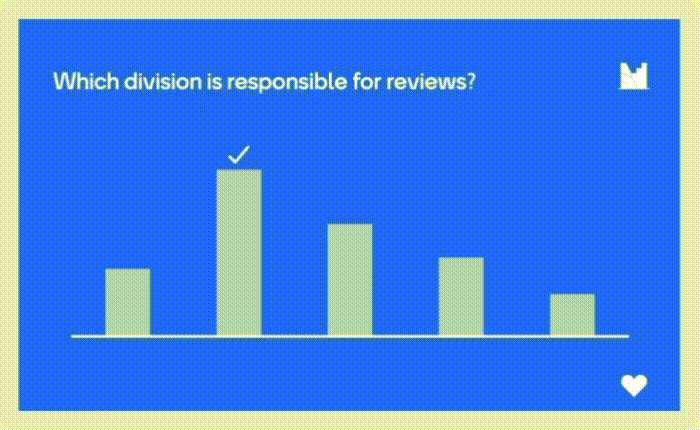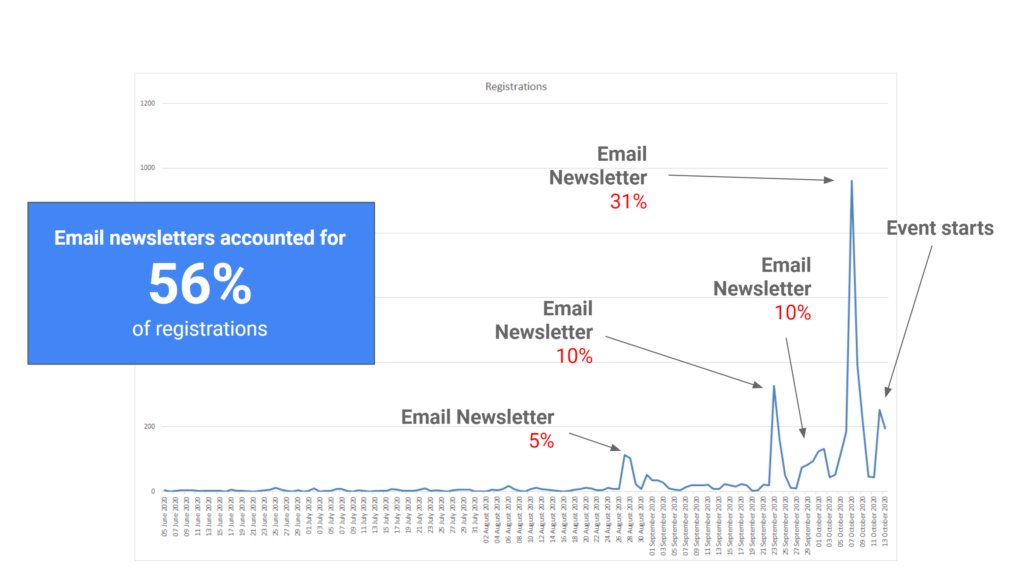
Listen to this blog post below. Enjoy selected audio versions of my blog on Soundcloud.
Organising a virtual event is a bit like the work of a synchronised swimmer: while things might seem smooth and graceful above water, below the water there is a huge effort that is needed to move, adjust and stay afloat.
Essentially, it’s not as easy as it seems!
After working on digital communications for a major global virtual event with over 200 speakers and 4500 participants, I thought it would be helpful to compile my top 10 recommendations to help others organise their virtual events.
This blog post dives into the issues I faced when organising a virtual event, the things I learned and my top 10 recommendations to organise a successful virtual event.
With some luck, after reading this article you too will be as graceful as a synchronised swimmer when organising your next virtual event!
1. Choose your virtual event platform wisely
If you want to organise a seamless virtual event, you need to plan ahead for technical and logistical issues in advance.
Your event platform can make or break your event, so here are a few recommendations when choosing an online events platform:
- Make sure that the platform is well-known and reliable. Some new, untested platforms may crash if there are too many people joining at the same time, for example.
- Test the platform thoroughly and seek feedback from people who have used it in the past, both as speakers and attendees. You’re looking for a platform that is easy to join and offers a smooth, frictionless experience. You also want to make sure that it passes the firewall of corporate servers, otherwise it may be difficult for many of your speakers to log into the platform. Some banks and government institutions will not be able to use Zoom, for example. For this reason, polling your external stakeholders in advance to find out what platform they prefer could be a big time-saver.
- Make sure that you will be able to work within the limits of the platform, such as the limit of speakers and break-out sessions. Some platforms will restrict this, limiting your flexibility.

2. Set time aside for speaker tech sessions
Even if you host your event with an easy-to-use platform like Zoom, there will still be numerous speakers that aren’t tech-savvy and can’t join easily, so you will need to prepare and set aside time to go through the event platform with them, sometimes one-on-one.
Ideally, align this with content preparation with all session panelists on MS Teams or Webex, for example, and then migrate to the virtual event platform halfway through to anticipate any issues that may arise for speakers logging in.
Here are some tech recommendations if the speaker has a very strong firewall and cannot join user their business computer: see if they can disable their VPN, suggest that use a personal laptop or tablet/ipad, and in the worst-case scenario, see if they can join with their phone.
3. Find the right topics that will drive engagement
Usually the sessions that are the most popular and engaging are those that touch on new, innovative topics that strongly resonate with your audience. Interviews with well-known personalities of your industry are also popular.
This means doing some research beforehand, perhaps via surveys online and on social media, to find out what your audience would like to hear about and discuss. I offers tips for this in my recent article The Ultimate Virtual Event Marketing Checklist
Try to avoid monotone speeches, and rather suggest interactive formats allowing for off-the-cuff discussions and exploration of relevant and unexpected “elephant-in-the-room” issues.

4. Follow the 80-20 rule
At least 80% of your sessions should be recorded and 20% live, giving you the flexibility and bandwidth to focus on interactive sessions without having to put out fires whenever a live session goes wrong, especially if you are hosting numerous parallel sessions.
If you want interactivity, a good alternative to the live session with a keynote speaker is to host a live Q&A after the session with the speaker, like this example from The Economist, making it clear that there will be opportunities for questions and discussion afer the keynote:

5. Encourage interactivity
As mentioned in my recent article, The Ultimate Virtual Event Marketing Checklist, virtual events need to be different and have a measure of interactivity to succeed. This includes adding live polls during your live sessions to gain new insights and generate unexpected discussions. Audience interaction apps like Slido and Mentimeter are great for this and can truly elevate your sessions to a new level of interactivity.
With Mentimeter, for example, you can create polls, word clouds and quadrants that allow participants to visualise their responses in real-time to create a fun and interactive experience. Alternatively, these polls can be used to feed into future strategic directions for your organisation.
It’s helpful to mix up sessions: spread things around and surprise your audience with a mix of useful workshops, keynotes, panel discussions, technical presentations and deep dives that can avoid Zoom fatigue. Use colour coding and tagging on your website if possible to easily distinguish each session format.
I also recommend avoiding “Death by PowerPoint” by limiting the number of slides your presenters can use, or banning them altogether for some sessions to encourage interaction and new ideas.

6. Embed calendar links in your email event confirmations
Many of us are working while attending an event online, so it’s important that the sessions can be added automatically into calendars to block time and limit distractions.
This means setting up specific url invitations for each session or using an events platform that allows for the creation of a customised calendar that links to your work diary. Check out this helpful article from Hubspot showing to insert calendar invites right into your emails.
We’re all busy, so anything that can help nudge your audience will be tremendously important to increase your chances of success.
7. Social media raises awareness, email drives registrations
While social media is essential to build up the visibility of online events and encourage engagement on the day, email is still paramount in order to drive registrations. There is a reason why 80% of business professionals believe that email marketing increases customer retention.
For the event I helped organise, email newsletters accounted for 56% of registrations – and this was only from four emails!
It makes sense: when people are reading emails they’re much more likely to be proactive and go through a registration process, less so when they are passively scrolling on social media.
So it’s essential that you develop a pro-active newsletter list and email campaign plan long before the event in order to gather interest and drive registrations for your online event.
Automatic email reminders for delegates are also important, especially for those who have signed up a while ago and may have forgotten to add the event to their calendar. Remember to plan for pre-programmed “Day-before reminders” as well as last-minute “Starting in 5 minutes!” emails to delegates on the morning of the event.
If you’re looking for inspiration for emails check out this guide by Drift: 12 Conversational Email Templates To Steal Today.

8. Build mutual partnerships
Developing mutual partnerships with like-minded organisations can help you reach new and complementary audiences. While this may take some time to set up, it will really help increase visibility and buzz before the event.
There’s no need to over-complicate things: you can simply send a clear, non-transactional proposal via email that eliminates the need for paperwork, thereby increasing your chances of success with potential partners.
Here is a sample partnership email that is free for you to download.
This can be sent directly to the Communications Directors of your ideal event partners, ensuring that you are gaining support from the right people who can amplify our message.
Also, don’t hesitate to ask your speakers how to best promote their session. During our prep calls with speakers, I always ask to be introduced to their Communications Directors, which helps to encourage sharing and amplification of the event on their channels.
Speakers also want to promote their session so it’s important to help them spread the word, which brings me to my next point…
9. Make it easy to spread the word
It’s essential to develop a full communications pack with all social media assets, links, proposed social media posts as well as email copy templates so that speakers, sponsors and partners have an easy-to-use model to promote your event.
If you want a low-tech option that everyone can access, drafting your comms pack in MS Word makes it easy for anyone to copy-and-paste text or right-click to save pictures.
Alternatively, I have also used Trello for the comms pack of various events in the past. This free tool allows you to easily add assets and instructions in a visually appealing event dashboard.
10. Plan ahead for post-event communications
As I have said in my recent article, an event should be the beginning, not the end of your campaign.
When you are in the planning phases, try to think of all the ways that you could re-use or re-package some of the great insights from your event so that you have a clear roadmap to follow.
Brainstorm with your team how you could leverage content from the event, and start planning for potential outputs. This could include:
- Blog articles
- Social video clips
- A digital book
- Online courses and training sessions
- Reports using your event polls
- Podcast episodes
An easy win is transcribe keynotes and panel discussions, which can be simply done with Microsoft Transcribe or Google Voice Typing, and then edit these into bite-size articles with an accompanying video of the session.
Alternatively, if you decide that you want to produce a post-event video, it’s helpful to think of the main message of the video in advance. This way you can prepare a single question to all speakers so that you end up with a post-event video that can showcase a strong, united message.
Defining these outputs in advance will help you to easily put together a cohesive, multi-faceted post-event game plan.
You also need to plan ahead for the post-event survey. Ideally, this should be shared during the last session and sent via email to all participants right after the event, together with a link to the recordings.
If you’re looking for ideas you can check out this Post-event feedback survey template from Surveymonkey.

Don’t hesitate to get in touch!
I’m always happy to help! For any further comments or questions about communications and planning for virtual events don’t hesitate to get in touch with me using my contact form or via info@nicholasbruneau.com.

